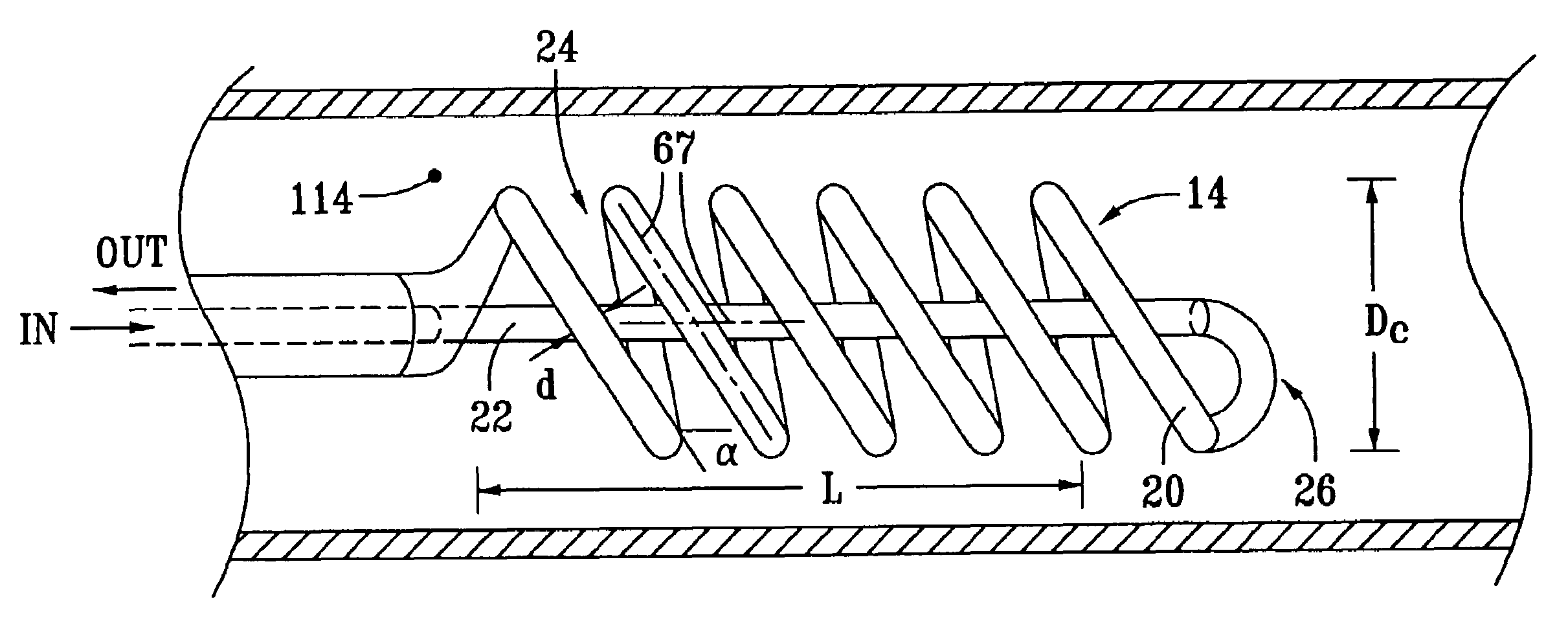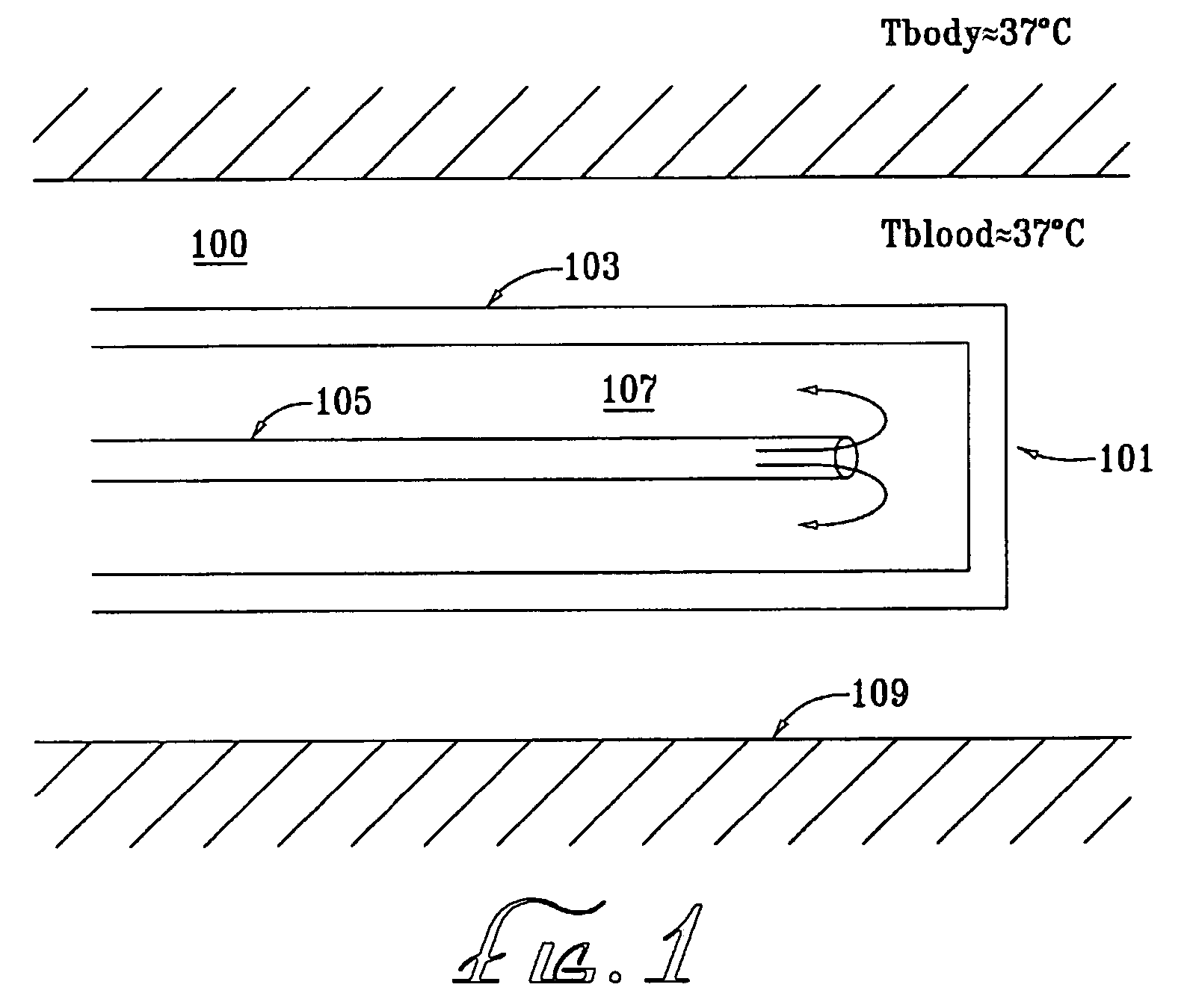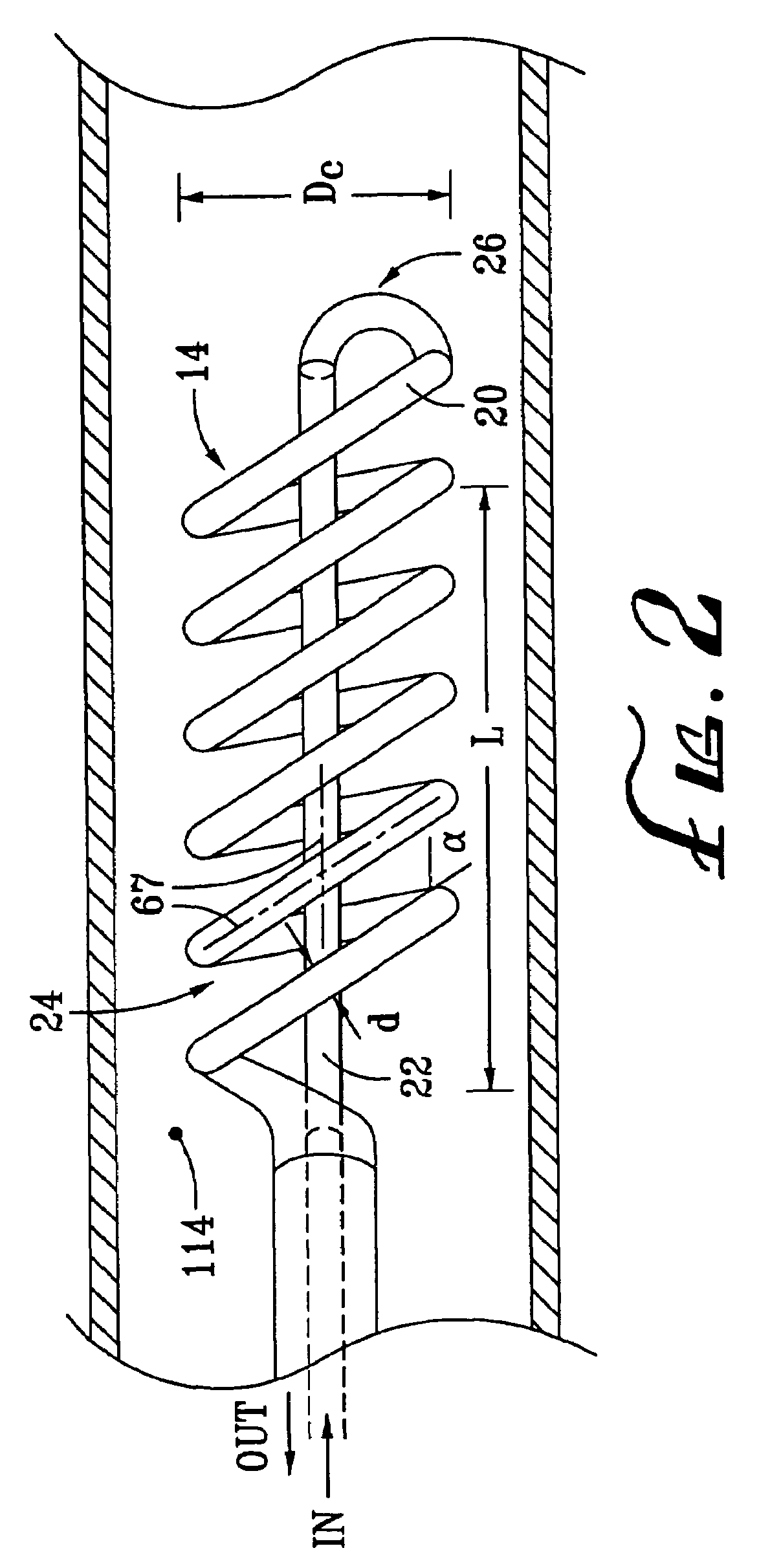Inflatable catheter for selective organ heating and cooling and method of using the same
a selective organ heating and cooling technology, applied in the field of manipulating the temperature of a selected body organ, can solve the problems of severe derangement of the cardiovascular system, low cardiac output, and risk of systematic vascular effects of use of total body hypothermia, and achieves high degree of lateral flexibility, high surface area, and easy insertion procedure
- Summary
- Abstract
- Description
- Claims
- Application Information
AI Technical Summary
Benefits of technology
Problems solved by technology
Method used
Image
Examples
Embodiment Construction
[0039]The temperature of a selected organ may be intravascularly regulated by a heat transfer element placed in the organ's feeding artery to absorb or deliver heat to or from the blood flowing into the organ. While the device is described with respect to blood flow into an organ, it is understood that heat transfer within a volume of tissue is analogous. In the latter case, heat transfer is predominantly by conduction.
[0040]The heat transfer may cause either a cooling or a heating of the selected organ. A heat transfer element that selectively alters the temperature of an organ should be capable of providing the necessary heat transfer rate to produce the desired cooling or heating effect within the organ to achieve a desired temperature.
[0041]The heat transfer element should be small and flexible enough to fit within the feeding artery while still allowing a sufficient blood flow to reach the organ in order to avoid ischemic organ damage. Feeding arteries, like the carotid artery,...
PUM
 Login to View More
Login to View More Abstract
Description
Claims
Application Information
 Login to View More
Login to View More - R&D Engineer
- R&D Manager
- IP Professional
- Industry Leading Data Capabilities
- Powerful AI technology
- Patent DNA Extraction
Browse by: Latest US Patents, China's latest patents, Technical Efficacy Thesaurus, Application Domain, Technology Topic, Popular Technical Reports.
© 2024 PatSnap. All rights reserved.Legal|Privacy policy|Modern Slavery Act Transparency Statement|Sitemap|About US| Contact US: help@patsnap.com










